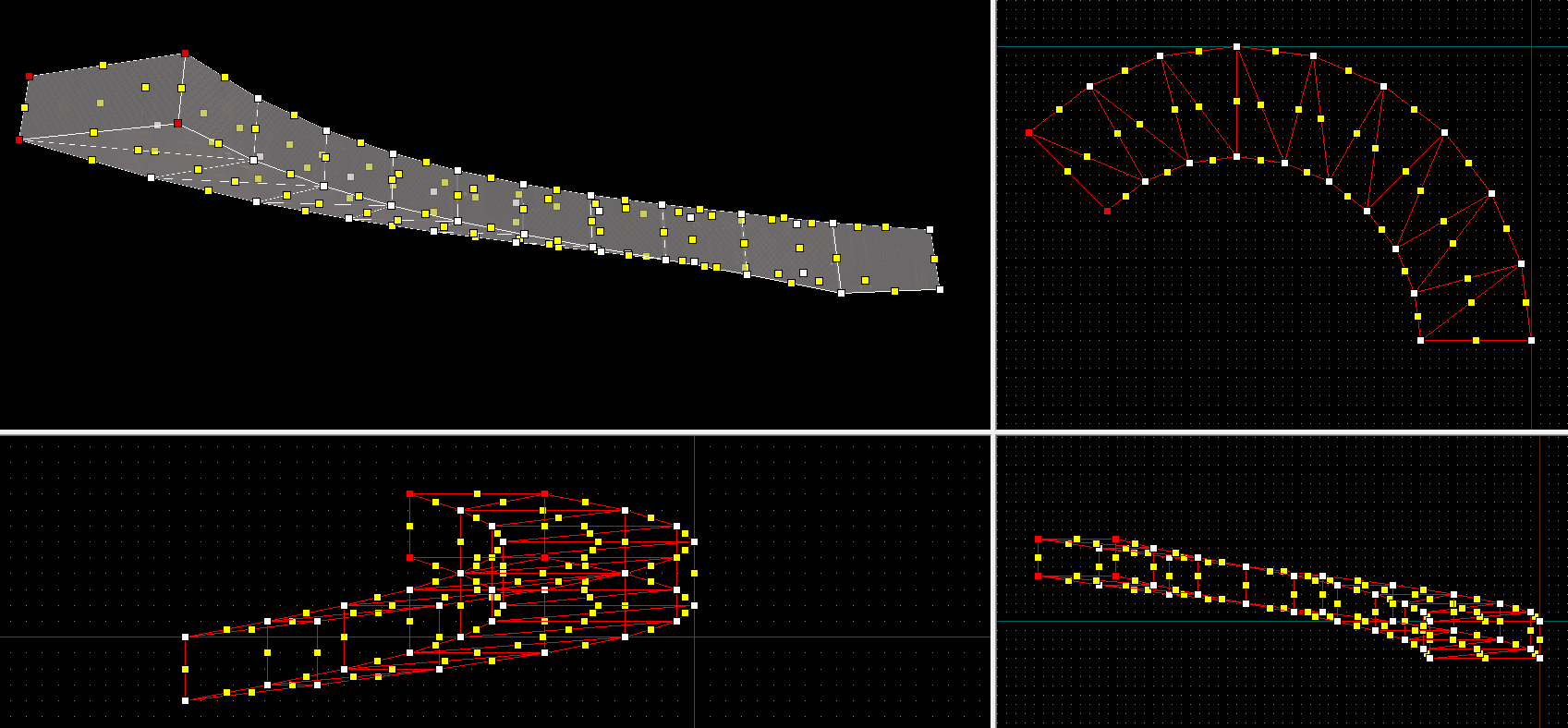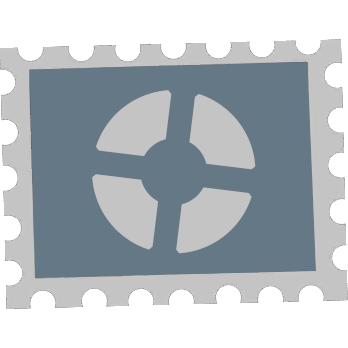Using displacements has the nice benefit that you can't make a invalid brush by accident. However, it's also a ton of work for something rather small.
A faster method is to make an arch, just as shown in the guide.
Now, instead of making multiple arches and displacing them and all that, we instead use the clipping tool

and cut each piece up into 2 triangles. It might be required to use the "solids" selection method, as you otherwise might end up cutting several pieces at once.
And this was pretty much already the hardest part. Now we just grab the vertex tool

and shift everything upwards. I like to do this by selecting big chunks like this
and then moving my cursor to one of the other views and pressing the 'arrow up' key.
Repeat this and you end up with this
Extra info
The reason we cut up the brushes into triangles is because we would be creating invalid solids. What makes a solid valid/invalid? The rules are as follows:
1. A brush must be convex. (can't make a hole from a single brush)
2. Every surface must be planar. (perfectly flat)
If we simply moved the vertices up without cutting the brushes, we would be breaking the second rule as the top and bottom surface would no longer be flat. You simply couldn't place all 4 vertices on one plane. However, a triangle is always planar, no matter what.
It is also obvious that the more pieces the arch is made of, the smoother it will be. However, once you start using a very large amount of pieces you might as well switch to the displacement method, especially because it increases the number of vertices not just radially. Hard to explain what I mean by that.







